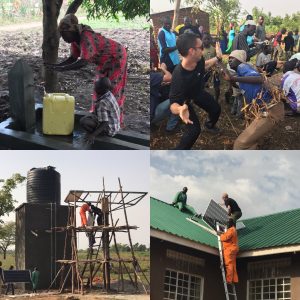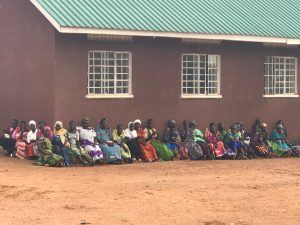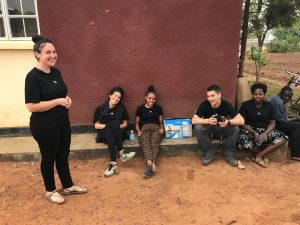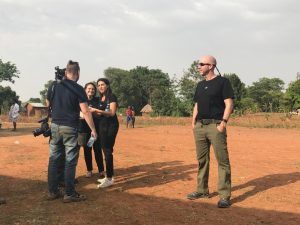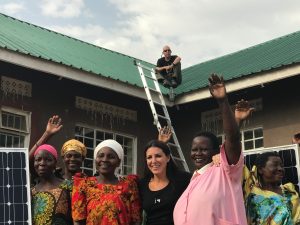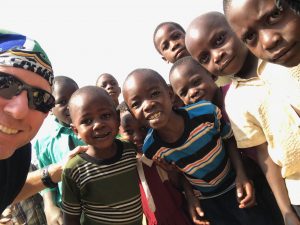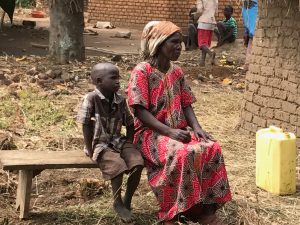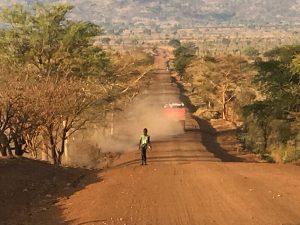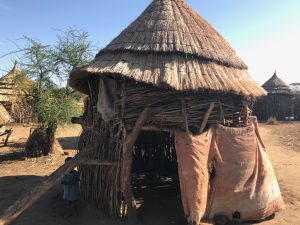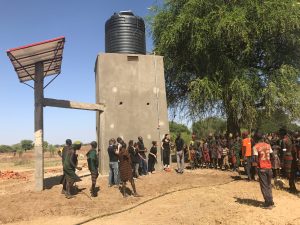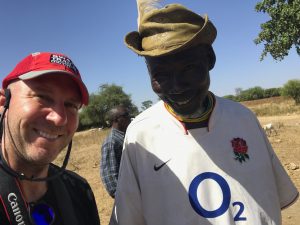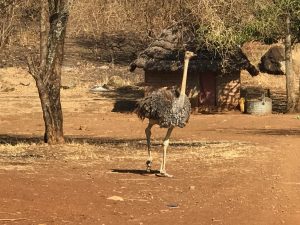My First Humanitarian Footsteps with Innovation Africa in Uganda
My First Humanitarian Footsteps with Innovation Africa.
Building water wells and solar energy in the desert to help others
Most Meaningful Experience: Adapting to the environment and learning about the region
I was wracked with uncertainty going into my first humanitarian project in Uganda’s Karamoja region. I’d just read about the horrors of Idi Amin’s massacres, with 100,000 people killed in Karamoja alone. Father Paul had picked me up from Entebbe Airport and was driving me to Mbale, with his gospel music and relaxed temperament putting me at ease. He had spiritual powers, like he could sense things and say exactly what was needed.
Stopping at an ostrich farm, Father Paul joked that the birds were twice my size and could easily eat me, letting out a jovial laugh. He sensed my unease at the guards wielding guns and explained that they’d been bought back following the return to peace, paying $1,000 for each M1-16. He was a man who was happy in who he was and I valued the stability he offered as we got to know each other during the course of the trip.
I was going to spend the next four days working with Innovation: Africa, an Israeli-run NGO that brings solar, water and agricultural innovations to rural African villages. It was led by the highly energized Sylvan whose passion for the project was visible from day one and linked to the political ties between Israel and Uganda (Uganda supported a Jewish state) and the 1976 counter-terrorist hostage-rescue mission “Operation Entebbe”.
The first day saw us visit numerous villages and sites where wells were going to be built or solar panels installed. I remember standing over a tiny spout of water spurting from the ground and being amazed that it could transform into a functioning well that would alter the lives of the people living there. Sylvan also took us to a large pump that was powered by solar installations monitored by satellites that routed back to Israel, ensuring everything was working properly.
In each village, we were greeted with appreciation – people inviting us to sing and dance after each new deployment. But I could see how the children were being impacted by water-borne diseases, their tummies protruding out from their bodies. In one thatched hut, we saw a lady who was visibly dying, with the villagers around her resigned to the fact. Sylvan brought her food and water to ensure she would survive a little longer.
When I returned to our hotel after that first day, I was emotionally decimated. I sat down on my bed with my hands around my head, just wanting to cry. A fellow volunteer Max saw how I was struggling – “it makes you really appreciate everything we have, where we are born and what we do”.
Over the following days, we saw the impacts of InnoAfrica’s work in the villages of Karamoja and had the opportunity to contribute to its ongoing facilitation. We saw a water tower that extended a few kilometers in either direction to provide smaller wells to the villages and installed a solar setup at a medical institute and school. They did everything here, from delivering babies to curing malaria. It was an understatement that having electricity and lights would assist them in carrying out their work.
Each of the villages we visited was different, with various tribes that each had their own dress, customs and attitudes. In one village, the women wore beautiful gowns and the men traditional skirts, with the community welcoming us with big smiles and open arms. After the spicket was turned on, they sang and danced for hours, completely exhausting us.
In some cases, there was tension as villagers saw others receiving wells and wanted to know how they could get one also. One man who spoke excellent English explained that he wanted to build a farm and if they had water, he could do that. Another elderly man told me that he’d studied in the UK and had dreams of being a professor. But after returning to Uganda, he’d got stuck during the revolution and hid in the villages. I felt a sense of someone who’d had hope and a future ahead of them but was never given the opportunity to reach their dreams.
The experiences of each day left my mind racing and I sought solace in running through the rolling hills behind our hotel. One evening, I was so immersed in my thoughts about what we’d encountered that I lost track of where I was or how far I’d come. The sun was beginning to set and I heard a wild dog yelp – a sense of unease seeped in. But the sight of kids waving at me from outside their huts brought me back to reality. It’s so easy to exist inside your brain and let mental thoughts override your emotions and actions, without acknowledging what’s actually around you. I jolted myself back into check and realized there was nothing to worry about, only the fear that one creates.
On our final day in the field, I watched a woman and her children fill dirty yellow containers at a hand pump and carry them home on their heads. I hoped that with the installation of a well, they wouldn’t have to do that much longer.
We stopped for a late lunch under a tree that offered sparse shade and were approached by two villagers dressed in long, red robes carrying large bows and arrows. I wasn’t sure if they were coming to shoot us or just check us out. They told us they’d been walking for two days trying to hunt food, but to no avail. We shared our lunch of beans, meat and rice, then they taught us to shoot using their bow and arrows. My unsteady hand couldn’t hit the coke can target about 10 meters away but they knocked it over in one shot.
Just as I was starting to find my groove and feel settled in my new humanitarian role, the project with Innovation: Africa was over. It had been a wake-up call. Not just about my own abilities to travel independently in Africa and explore more off the beaten tourist track but also about life’s meaning and what we can do to impact the lives of others. I suddenly realized that I needed a lot less to be happy than I thought I did. A flame was sparked in me that would burn for a long time.
